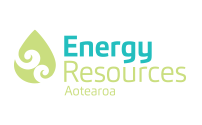Strong environmental rules already in place for seismic surveys
The Petroleum Exploration and Production Association of New Zealand (PEPANZ) says it would welcome a discussion on how to improve the already strict regulations around marine seismic surveys.
“New Zealand has some of the strongest rules and regulations in the world in place already, but we would welcome the chance to discuss how they could be further improved,” says PEPANZ CEO Cameron Madgwick.
“The Department of Conservation has a detailed Code of Conduct for minimising acoustic disturbance to marine mammals which is strictly followed. This is regarded as one of the most stringent and precautionary codes in the world.
“All projects have to submit a very detailed marine mammal impact assessment (MMIA) which must be approved by DOC before an operation can begin.
“This code was released in 2012 after eight years of development involving input from marine biologists, NGOs, Government regulators and international experts.”
According to DOC “The 2013 Code is generally working effectively and providing good protection for marine mammals.”
“The Environmental Protection Authority (EPA) is responsible for monitoring seismic surveys within the EEZ to determine compliance with the Code.
“Great care is taken to avoid disturbing marine mammals. All survey vessels use Passive Acoustic Monitoring systems (PAM) which operate 24 hours a day to detect and track marine mammals like whales and dolphins.
“There are also two independent visual observers onboard every vessel, and operations are stopped immediately if any mammals of concern, including most whales, come within one and a half kilometres of the vessel. The mitigation zone is 200 metres for other marine mammals.
“Seismic surveys are a very common scientific method used around the world and have been carried out in New Zealand for decades with no clear evidence of marine life being impacted.
“The industry also goes to great lengths to consult with iwi and hapu, including training iwi members to work as observers. All marine mammal sightings are reported to DOC which has helped build much of our knowledge in this area.”
Further information
- PEPANZ website on how seismic surveys operate and are regulated: http://www.energymix.co.nz/our-process/seismic-surveys/
- Department of Conservation information on Seismic Surveys Code of Conduct: http://www.doc.govt.nz/our-work/seismic-surveys-code-of-conduct/
